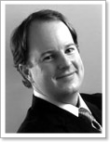When two great thinkers come to a similar idea from different starting points and careers, I pay attention. For business and investment wisdom, Clayton Christensen of the Harvard Business School teaches his students a collection of “theories and frameworks” to help them understand and deal with different situations they may face — the trick is to know which theory to apply when. Charlie Munger of Berkshire Hathaway speaks of a “latticework of mental models” where a wise person is served by understanding 80-90 “mental models” from science, engineering, biology, and more. The more cross-disciplinary are the models, the better. To him, that is the source of “worldly wisdom” rather than pure IQ.

Last week, Christensen gave a talk at Apple’s headquarters as part of a Duke in Silicon Valley event. Talking with Christensen at the reception, the similarity struck me between Christensen’s frameworks and the ideas explained by Munger. When I took Christensen’s class in 2001 or 2002, I remember being handed at the beginning of class a couple of summary papers with maybe 15-20 different hieroglyphic-like symbols representing different theories and models that are “true” in some circumstances.
Some of the Christensen frameworks from his class containing investment wisdom:
- Disruptive innovation model — his classic model where “crummy” products get better over time and take over market segments the incumbents are happy to abandon
- Intended vs. emergent strategies — I love this one as it throws out the idea of a CEO as the master strategist divining the best path forward and dictating from on-high. In my experience, good strategy and competitive advantage more often emerges from the daily activities of the organization and evolves over time. The CEO’s job is more to be a great observer of what’s already happening to find a way to encourage the activities that are building long-term competitive advantage and discourage bad habits in the organization.
- Culture and capabilities framework — culture is a learned experience from solving problems. Through those experiences, an organization develops a shared belief system on how to approach and solve problems. Please see all these posts on culture.
- Integration vs modularity — In some industries, the profits are in the integration and in others, the profits are in modules (Microsoft or Intel in the PC era versus IBM).
For Munger, his ideas of “worldly wisdom” have been circulated from talks he gave in the 1990’s. The idea is that a wise person needs a “latticework of mental models” rather than the ability to crunch numbers in his head or regurgitate facts. He explains that multiple models are better (shades of Christensen emphasizing a collection of frameworks rather than the singular focus of some academics), the models should be cross-disciplinary, and the best people can figure out which models are relevant to which situation.
Some Munger mental models related to investment success:
- Compound interest —
- Math of combinations and permutations — he mentions how our brains are not wired for our instincts to be accurate in these calculations
- Accounting — “one hell of an invention” but everyone knows it is at best a crude approximation
- Back-up systems — it is wise to build a bridge for more weight than expected
- Ask ‘why’ multiple times — helps reveal true reasons and clear thinking
- Impact of subconscious on human decision-making — he often examines a situation on two levels, on one level are the more obvious industry or market dynamics and on a secondary level are his attempts to understand the subconscious and psychological effects that may be at work
- Experience curve and advantages of scale — please see this post and Munger makes the simple analogy that as the size of a tank increases, the steel only increases by the square but the volume increases by the cube
- How human institutions and bureaucracies behave —
In fact, business school itself is a gathering of theories/mental models/frameworks to help one recognize situations and respond. Of course, there is a risk that some of the models taught as gospel turn out to be more harmful than helpful (at the top of that list I would put ‘beta’ as a measure of risk and the efficient market theory).
- Classic: Michael Porter’s Five Forces of Competition (see this post about it)
- Classic: experience curve, or economies of scale (see this post about it)
- 4 P’s of Marketing (Product, Price, Place, Promotion) — don’t think I have ever used this, but it sounds good
Our brains are assisted by thinking in frameworks or models to help us remember important concepts, recognize the patterns where those concepts may apply, and provide ourselves a hint of what action to take. To work on understanding and being able to apply many models is great advice from two great thinkers.


 I am an investor at Greybull Stewardship, an
I am an investor at Greybull Stewardship, an 
 Sign Up
Sign Up RSS Feed
RSS Feed
By BCG Growth Share Matrix - Market Share, Market Growth | Competitive Advantage | Business Blog July 9, 2013 - 4:27 pm
[…] Older ideas, seen anew, can be helpful to business owners. In that spirit, I have highlighted Economies of Scale and Michael Porter’s Five Forces previously. Today, I highlight another older idea in the Boston Consulting Group (BCG) Growth Share Matrix that was developed by the global consulting group in 1968. It is another simple, but helpful, framework for thinking about elements of your business. It provides one lens on how to prioritize and manage a portfolio of projects, initiatives, businesses, or any other elements of a portfolio. In other posts I have explored how helpful frameworks like this one can be used in “theories and frameworks” as with Clayton Christensen at the Harvard Business School and…. […]
By Great Tool for Business Decision Making in Uncertainty - Mason Myers Blog July 29, 2013 - 8:12 pm
[…] Investment Wisdom Convergence from Clayton Christensen and Charlie Munger [masonmyers.com May 20, 20… […]
By Berkshire Hathaway: If You Love the Management, Set Them Free - Mason Myers Blog April 21, 2014 - 7:46 am
[…] Investment wisdom from Clayton Christensen and Charlie Munger […]